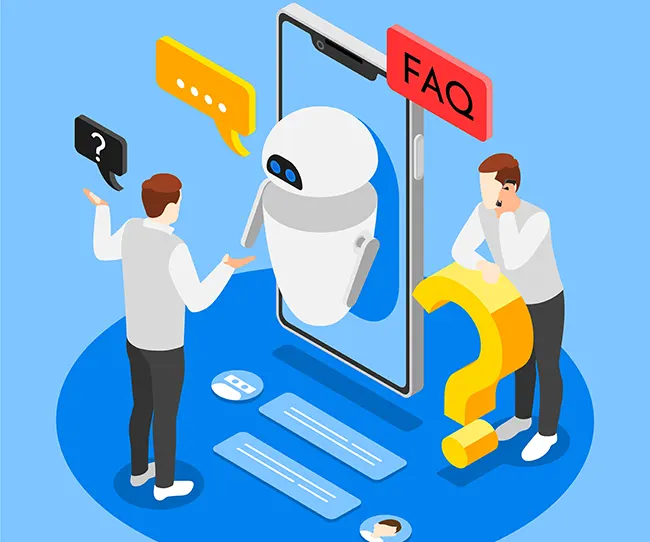Evolving Contact Channels: How AI and Automation Are Redefining Customer Conversations

The contact centre landscape is undergoing rapid transformation. Across industries, leaders are asking how technology — especially artificial intelligence (AI) and automation — can improve customer experience (CX) while maintaining empathy and connection.
Our latest study explored this question through an in-depth look at more than two dozen organisations worldwide. By combining research, mystery shopping, and practical experience, we examined how contact channels are evolving and what sets successful digital transformations apart.
Three major themes emerged from the findings:
- The rise of conversational AI within interactive voice response (IVR) systems.
- The shift from basic chatbots to intelligent digital assistants.
- The ongoing challenge of bridging siloed communication channels into one seamless journey.
- The IVR Evolution: Transition to Conversational AI
Over time, contact centres have experimented with multiple ways to guide customers towards digital channels while keeping service efficient and intuitive. IVR systems have long served as a foundation for self-service, offering features like balance checks, PIN resets, and bill payments.
However, for many organisations, innovation in this space has been slow. Containment rates — the percentage of customer enquiries resolved without a human agent — vary widely. Some businesses achieve exceptional performance through simplicity and intuitive design, while others lag behind due to complex processes or disjointed customer journeys.
To improve containment and efficiency, some organisations are introducing deep links within IVR systems. These allow customers to receive secure SMS links that take them directly to relevant information online, merging convenience with encouragement to use digital self-service channels.
Others, meanwhile, prioritise a “white glove” approach, connecting callers to agents quickly for a more personalised experience. Both strategies reveal the ongoing tension between efficiency and empathy — a balance that every contact centre must navigate carefully.
The Future of IVR
The next evolution in IVR lies in natural language processing (NLP) — the core of conversational AI. Virtual agents powered by NLP can understand and respond in natural speech, creating smoother, more human-like interactions that eliminate the frustration of rigid “Press 1 for…” systems.
In some industries, biometric authentication is also emerging as a powerful enhancement. By using voice recognition for secure identification, customers can skip lengthy verification steps, improving both convenience and security. AI-powered fraud detection within these systems adds another layer of protection.
Ultimately, the integration of conversational AI and biometrics marks a shift from reactive support to proactive engagement, where systems not only understand intent but anticipate customer needs.
- The Chatbot Evolution: From Basic to Intelligent AI Bots
Most chatbots today handle simple, repetitive queries — but this is rapidly changing. Many organisations are adopting a digital-first approach, encouraging customers to begin their journeys online, supported by increasingly intelligent AI-powered bots.
These advanced chatbots will soon manage a much broader range of requests, capable of understanding context, intent, and emotion. Mobile applications are often the first area of focus, with businesses designing bots that deliver quick, intuitive interactions within apps before expanding them to websites or other platforms.
The future lies in unified voice and chatbot solutions. Developing both simultaneously allows organisations to share design logic, improve consistency across channels, and achieve significant cost efficiencies. The result is a more cohesive, conversational experience — one where customers can move seamlessly from text to voice without losing context or repeating information.
- The Omnichannel Challenge: Bridging the Gaps
Despite years of investment in digital transformation, many organisations still struggle with fragmented communication channels. Customers often face the frustrating task of repeating details when switching from chat to phone, or from app to email. This not only erodes satisfaction but also wastes valuable agent time.
True omnichannel integration requires connecting the technology backbone that supports these channels. The most forward-thinking organisations are embracing cloud-based platforms to unify data, improve visibility, and deliver consistent experiences.
Equally important is data hygiene — ensuring information is accurate, updated, and accessible. Clean data powers the intelligent automation and personalisation that define the next generation of customer experiences.
Two priorities stand out in this transformation:
- Security and authentication – As digital interactions grow, protecting customer data becomes paramount. Biometric and multi-factor authentication are increasingly vital in reducing fraud while maintaining a frictionless experience.
- Context-aware transitions – When a customer moves from a chatbot to a live agent, the agent should immediately see the full history of that interaction. This continuity allows for faster resolution and a more personalised conversation, reinforcing trust and reducing effort.
A Human-Centred Future for AI in Customer Service
The future of CX is not about replacing people with machines — it’s about empowering both. AI and automation can simplify processes, personalise interactions, and enhance security, but their true value lies in supporting the human connection that defines great service.
Organisations that treat technology as an enabler, not a substitute, will lead the next phase of transformation. They will invest in tools that make experiences more seamless and personalised, while empowering employees to focus on the moments that matter most.
The journey towards advanced contact automation is far from over. But one thing is clear: those who combine intelligent design, transparent data, and human empathy will not only meet customer expectations — they’ll set the new standard for excellence.


